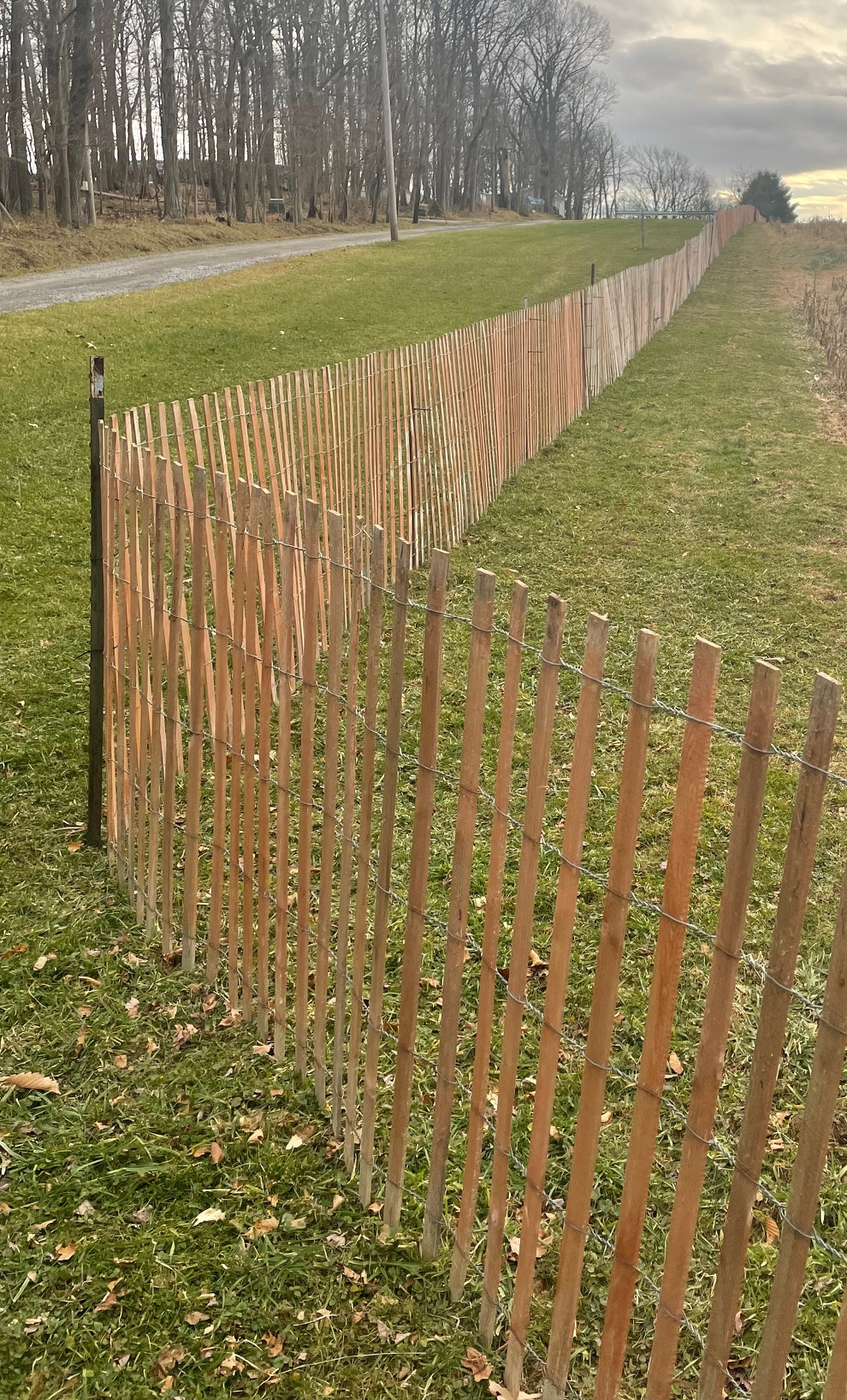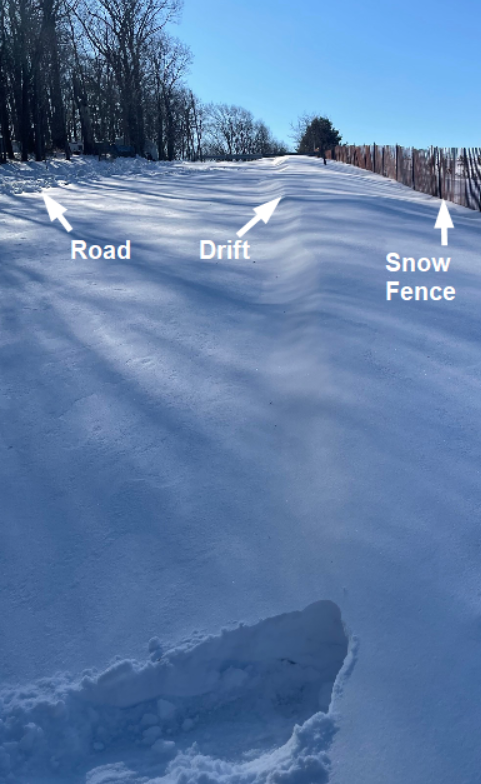Snow Fence Information
Tags | |
UUID | 7e3ac4a8-9841-11ee-a8f1-bc764e203090 |
A snow fence is a barrier designed to slow down the movement of snow, control drift location by causing the drift down-wind and just behind the fence line (see example below). It's typically installed in areas prone to heavy snowfall, such as along roads, highways, fields, or areas where snowdrifts can cause problems.

Snow fences come in various types, including:
- Wooden Snow Fences: Traditional snow fences were often made of wooden slats or boards woven together to form a porous barrier. These fences allow air to pass through while trapping snow, causing it to accumulate on the windward side, reducing snowdrifts in critical areas.
- Plastic Snow Fences: Modern snow fences are often constructed from plastic materials, such as high-density polyethylene (HDPE). These fences are lightweight, durable, and can be easily installed. They function similarly to wooden snow fences by disrupting wind patterns and causing snow to accumulate.
Snow fences work by disrupting the wind flow, causing it to slow down and drop snow particles on the windward side of the fence. This prevents the snow from drifting across roads, runways, or other critical areas, reducing the need for constant snow removal and improving visibility and safety in affected areas.
The design and placement of snow fences are crucial for their effectiveness. They are typically installed perpendicular to the prevailing wind direction and at a suitable distance from the area they are intended to protect. Properly installed snow fences can significantly reduce snowdrifts, making winter maintenance more manageable and enhancing safety in snow-prone regions.
In the photograph to the upper right, the fence is placed to the right (west) of the road. Prevailing winds from the corn field to the right regularly cause extensive drifts on the road even on hours with no new snow but some wind. The snow fence causes drifts immediately after the fence and not on the road, which you can see in the snowy photo taken in the same location only weeks after the first photo's were taken.
The T-posts were placed with the help of a post driver.
- Comments
- Attachments
No comments |
